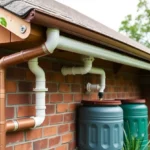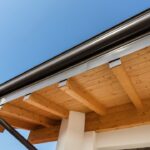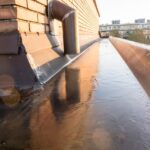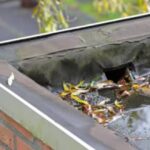Building a flat roof is more than just a construction task; it is an art and a science intertwined. Flat roofs offer a modern aesthetic, are cost-effective, and have a myriad of design possibilities. But knowing how to build a flat roof correctly is crucial to ensuring its functionality and longevity. This article delves into the step-by-step process, vital aspects, and technology involved in building a flat roof, providing insights for all, from homeowners to professionals.
Flat roof construction is an essential component of modern architecture, especially admired for its simplicity and functionality. When done correctly, it can add incredible value to a home or building by providing additional usable space for various purposes like gardens, entertainment areas, or solar panels.

Understanding Flat Roof Construction
A flat roof is often described as a roof that is almost level in contrast to the many types of sloped roofs. Although they are described as flat, they are not completely level and typically feature a slight slope to enable water drainage.
Key Benefits of Flat Roofs
Flat roofs boast several advantages: they are typically less expensive than pitched roofs, easier to construct, and can be more accessible for maintenance. They offer excellent space utilization and are highly suitable for multifunctional living spaces. This makes it vital to know how to build a flat roof efficiently.
Components Involved in Flat Roof Construction
Constructing a flat roof involves several key elements:
- Decking
- Insulation
- Waterproofing membrane
- Drainage systems
Each component requires the utmost precision and choice of quality materials for optimum performance.
Step-by-step Construction Process
1. Planning and Design
Before starting, plan the layout thoroughly. This includes measurements, architectural drawings, and selecting materials that suit your needs and local climate conditions. Consulting a professional or a reliable source like Choosing a Roof Construction Company can be immensely helpful in this phase.
2. Preparing the Site
Ensure the construction site is clean and clear of any debris. Accurate leveling is vital for a smooth installation process.
3. Installing the Frame and Decking
The frame acts as the backbone of your flat roof, offering structural integrity. Typically, plywood or oriented strand board (OSB) is used as decking material, which supports all subsequent layers.
4. Laying Insulation
Insulation is a crucial aspect as it plays a significant role in maintaining energy efficiency and comfort within the building. Different types of insulation are available, varying in material, cost, and effectiveness. A guide on flat roof insulation will help you make the best choice.
5. Waterproofing Membrane Application
An essential layer that protects the roof structure from water damage. Properly applying and overlapping the membrane ensures a sealed barrier against leaks.
Choosing the Right Roofing Material
The choice of roofing material can significantly impact the durability and lifespan of a flat roof. Options include EPDM, TPO, and other types well described in EPDM Roofing Guide.
Crucial Maintenance Tips for Flat Roofs
Maintaining a flat roof adequately increases its longevity and performance. Regular inspection, timely repairs of leaks or damage, and roof cleaning are essential components of a good maintenance strategy.
Tremendous Value of Regular Inspections
Routine checks are vital to catch early signs of deterioration or damage. It is recommended to have a professional inspection every few years to ensure the roof’s integrity. If you’re keen on learning how to prepare for roof inspection, a detailed guide provides priceless insights.
Preventive Measures for Weather Protection
Flat roofs are susceptible to weather damage, so it’s vital to apply a protective coat or film to help mitigate these effects. Consider solutions that are compatible with your roofing material as advised in available resources for weatherproofing solutions.
Cost Considerations
The cost of building a flat roof may vary due to factors such as materials, labor, and site location. Online calculators and detailed costing resources can provide an estimate for budgeting purposes. A reliable source like This Old House can provide a good benchmark.
Eco-Friendly Flat Roof Options
Incorporating eco-friendly features like green roofs or solar panels not only contributes to sustainability but may offer financial incentives such as tax credits. Exploring the option of installing solar panels will be a resource that guides you in fostering an environment-conscious approach.

Harness the Potential of Flat Roofs
To maximize your flat roof’s potential, consider using the space for green purposes, such as a rooftop garden or an outdoor lounge area. A guide to utilizing flat roof space offers innovative ideas for enhancing your living space while maintaining aesthetics and functionality.
FAQs
1. What is the best material for a flat roof?
EPDM and TPO materials are widely recognized for their durability and cost-effectiveness.
2. How often should flat roofs be inspected?
Regular inspections should occur every few years, with checks after severe weather events being prudent.
3. Are flat roofs more expensive to maintain compared to pitched roofs?
Flat roofs generally require less material and labor for installation, potentially reducing costs. However, proactive maintenance is key to prolonging life and saving money.
This article contains affiliate links. We may earn a commission at no extra cost to you.








